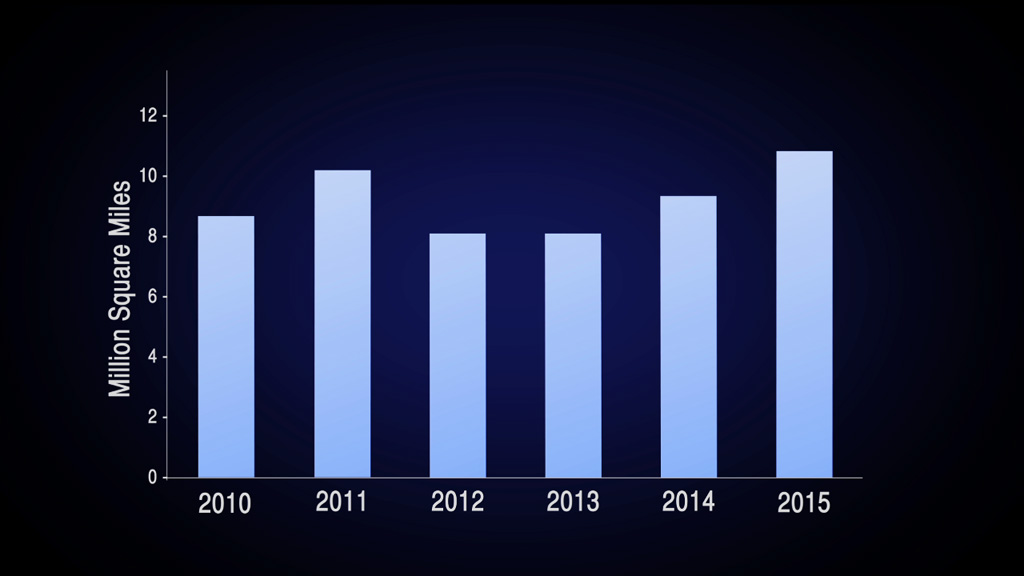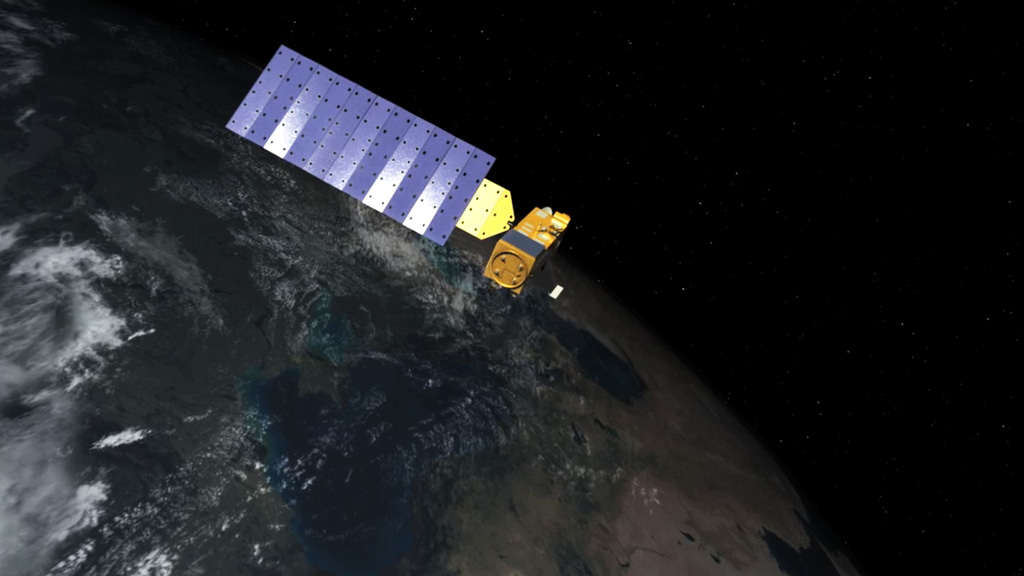Earth
ID: 12068

Since the early 1980s, scientists have observed a hole in the ozone layer that forms and expands over Antarctica in August and September during the Southern Hemisphere spring. But NASA satellite measurements show this year’s ozone hole area was larger and formed later than in recent years. On October 2, 2015, the ozone hole expanded to its peak of 10.9 million square miles, an area larger than the continent of North America. Scientists say the unusual timing and size of this year’s hole is due to colder than average temperatures and high levels of ozone-depleting compounds in the atmosphere. The compounds are mainly derived from man-made chemicals that steadily increased in Earth’s atmosphere up through the early 1990s. Since 2000, levels of these chemicals have slowly declined as a result of the internationally agreed-upon Montreal Protocol, which has regulated ozone-depleting compounds beginning in 1987. Although this year’s hole is on the larger side, scientists expect the ozone hole to recover back to 1980 levels by 2070. Watch the video to learn more.



Bigger and Later




Related Story
For More Information
Story Credits
Narrator:
Sophia Roberts (USRA)
Lead Producer:
Sophia Roberts (USRA)
Scientist:
Paul Newman (NASA/GSFC)
Lead Writer:
Audrey Haar (Telophase)
Sophia Roberts (USRA)
Lead Producer:
Sophia Roberts (USRA)
Scientist:
Paul Newman (NASA/GSFC)
Lead Writer:
Audrey Haar (Telophase)
Please give credit for this item to:
NASA's Goddard Space Flight Center
NASA's Goddard Space Flight Center
Short URL to share this page:
https://svs.gsfc.nasa.gov/12068
Keywords:
SVS >> App
NASA Science >> Earth
https://svs.gsfc.nasa.gov/12068
Keywords:
SVS >> App
NASA Science >> Earth








